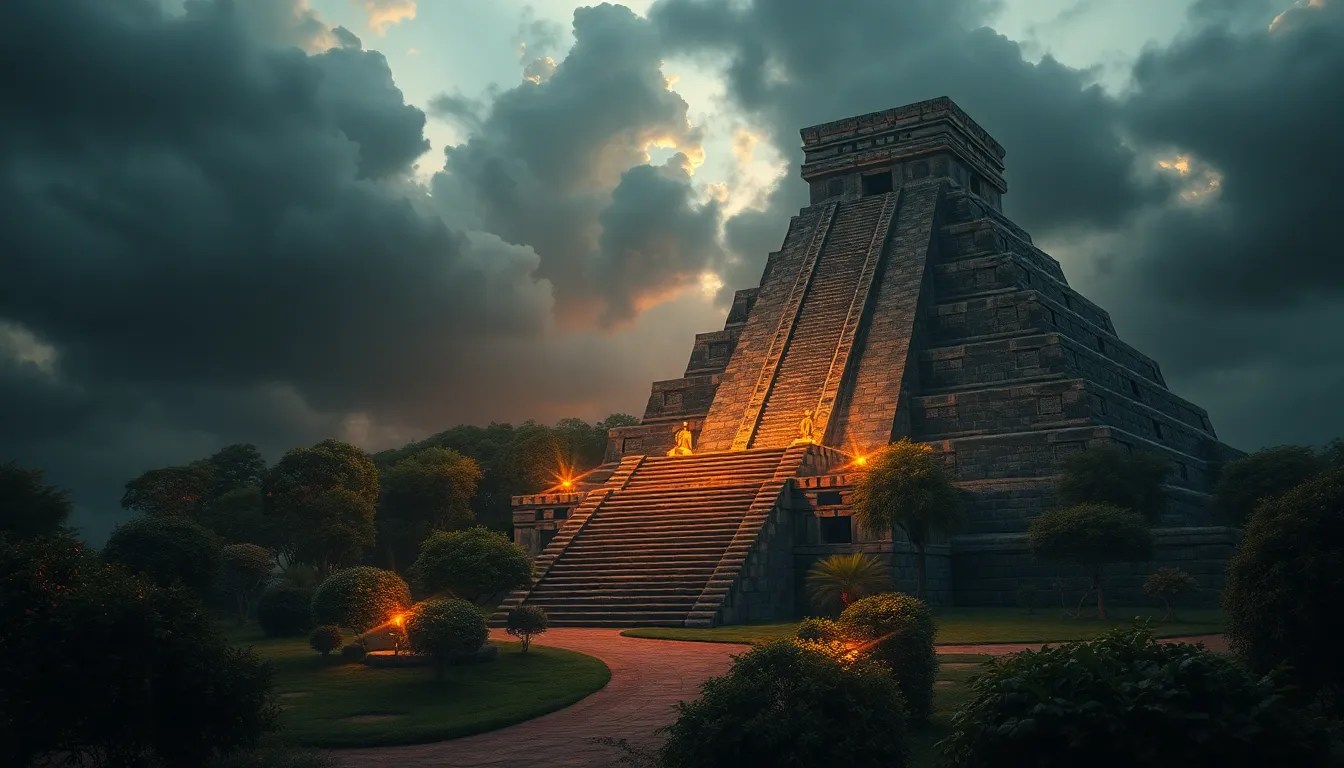Understanding the Aztec Connection to Land through Ancestral Worship
I. Introduction
Aztec mythology is a rich tapestry of beliefs, stories, and practices that reflect the worldview of the Aztec civilization. Central to this mythology is the deep connection between the people and the land they inhabited. The significance of land in Aztec culture cannot be overstated; it was not merely a physical space but a sacred entity intertwined with their identity and spirituality. This article explores the profound relationship between ancestral worship and land, shedding light on how these elements shaped the lives of the Aztecs and continue to resonate today.
II. The Role of Ancestral Worship in Aztec Society
Ancestral worship within the Aztec context refers to the veneration of deceased ancestors, who were believed to remain active participants in the lives of their descendants. This cultural practice was foundational to Aztec society, influencing social structures, agricultural practices, and spiritual beliefs.
Key beliefs surrounding ancestors included:
- Ancestors were seen as guardians and protectors of the living.
- Spirits of ancestors could provide guidance and blessings.
- Honoring ancestors was essential for maintaining harmony and balance in the world.
Ritual practices associated with honoring ancestors included offerings, prayers, and the construction of altars. These rituals were often conducted during specific times of the year, particularly during festivals dedicated to the dead.
III. The Sacred Landscape of the Aztecs
The Aztec worldview was deeply rooted in their understanding of the land as sacred. They believed that every geographical feature held significance, often reflecting the actions and stories of gods and ancestors. The landscape was not merely a backdrop for human activity but a living entity imbued with spiritual meaning.
Significant geographical features included:
- Mountains: Often viewed as sacred places where gods dwelled.
- Lakes: Seen as sources of life and fertility.
- Rivers: Considered vital for agricultural sustenance and spiritual cleansing.
The connection between land and Aztec deities was evident in their myths and rituals, where specific locations were associated with particular gods, each representing different aspects of life, such as agriculture, war, and fertility.
IV. Ancestral Ties and Territorial Claims
Ancestral lineage played a crucial role in determining land ownership and rights among the Aztecs. Families traced their lineage to specific ancestors, which granted them claims to certain territories. This connection reinforced social hierarchies and clan identities.
Ancestors were also seen as guiding forces in agricultural practices. They were believed to impart knowledge about crop cultivation and seasonal cycles, ensuring that the living could harvest bountifully.
Notable examples of land sacred to specific clans include:
- The area around Tenochtitlan, which was central to the Mexica identity.
- Regions associated with specific deities, such as the sacred mountain of Popocatépetl.
V. Rituals and Ceremonies Honoring Ancestors
Major rituals related to ancestral worship were intricately tied to the cycles of life and death. These ceremonies served to honor the deceased and ensure their continued presence in the lives of the living.
A particularly significant celebration is the Day of the Dead (Día de los Muertos), a time when families gather to remember and honor their ancestors. During this festival, altars are adorned with offerings, including food, flowers, and photographs, creating a bridge between the living and the dead.
These ceremonies reinforce the connection to the land, as families often return to their ancestral homes or sacred sites to celebrate, thus physically and spiritually linking themselves to their heritage.
VI. The Interplay Between Ancestral Worship and Agriculture
Agriculture was the backbone of Aztec society, vital for sustenance and economic stability. Ancestral worship was deeply integrated into agricultural practices, with rituals performed to seek blessings from ancestral spirits.
Rituals that incorporated ancestor veneration within farming cycles included:
- Offerings made to ancestors before planting.
- Prayers for a good harvest during the growing season.
- Celebrations of the harvest that acknowledged the role of ancestors in providing for the community.
The belief in ancestral spirits as protectors of the land underscored the importance of maintaining a respectful relationship with both the land and the spirits of the ancestors.
VII. Modern Perspectives on Ancestral Worship and Land
Today, many descendants of the Aztecs continue to practice ancestral worship, adapting traditional rituals to contemporary contexts. This revival of ancestral traditions is particularly significant in the face of increasing urbanization and cultural changes.
Modern practices include:
- Community gatherings to celebrate traditional festivals.
- Educational efforts to pass down ancestral knowledge and customs.
- Advocacy for land rights and environmental stewardship, emphasizing the importance of ancestral ties to the land.
The ongoing relevance of land and ancestry in modern indigenous movements highlights the importance of these connections in fostering identity and community resilience.
VIII. Conclusion
The significance of ancestral worship in relation to land is a fundamental aspect of Aztec culture that has left a lasting impact on current cultural practices. Understanding this connection not only enriches our appreciation of Aztec mythology but also highlights the importance of preserving these traditions for future generations.
As we reflect on the Aztec connection to land through ancestral worship, it becomes clear that these beliefs and practices continue to resonate, serving as a reminder of the deep ties between people, their ancestors, and the land they inhabit.



